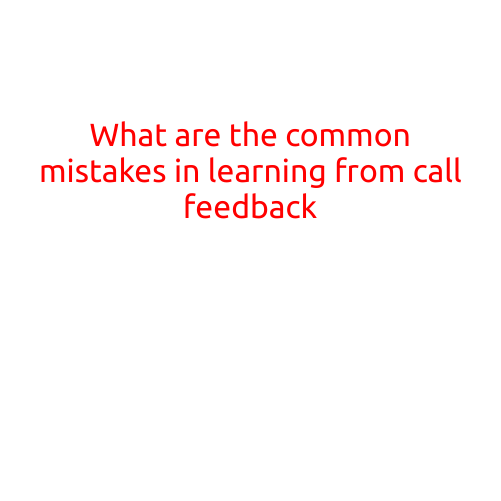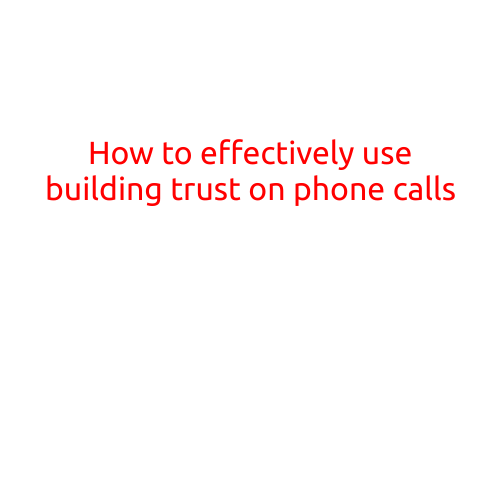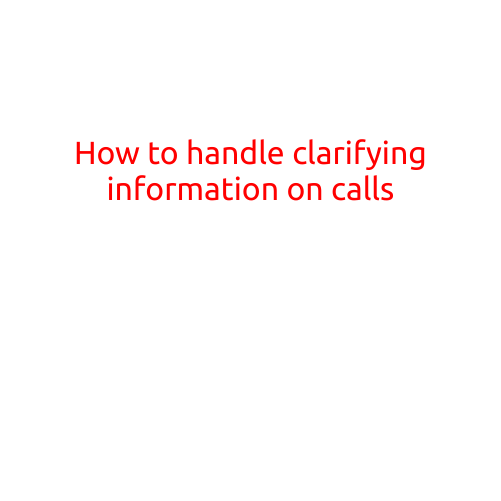
What are the Common Mistakes in Learning from Call Feedback?
Call feedback is a crucial component of the customer service experience, providing valuable insights into how agents interact with customers and identify areas for improvement. However, even with the best intentions, many contact centers fall prey to common mistakes when learning from call feedback. In this article, we’ll explore the most common mistakes to avoid and provide tips on how to make the most of your call feedback.
Mistake #1: Not Setting Clear Objectives
One of the most significant mistakes is not setting clear objectives for call feedback. Without a clear understanding of what you’re trying to achieve, you’ll end up with a vast amount of unstructured data that’s difficult to analyze. Before gathering feedback, define what you want to measure, such as customer satisfaction, first-call resolution, or net promoter score. This will help you focus your efforts and make data-driven decisions.
Mistake #2: Not Ensuring Feedback is Representative
Another common mistake is not ensuring that call feedback is representative of the overall customer base. This can happen when you only collect feedback from a specific subset of customers or calls. Make sure to collect feedback from a diverse range of customers, including new and repeat customers, to get a comprehensive view of your service.
Mistake #3: Not Using Technology to Support Feedback Collection
Technology can be a powerful tool in supporting call feedback, but many contact centers still rely on manual processes. Implementing a call feedback tool that can automatically collect and analyze feedback can save time and increase accuracy. Automated tools can also help you identify trends and patterns more quickly.
Mistake #4: Not Sharing Feedback with All Stakeholders
Once you’ve collected feedback, it’s essential to share it with all stakeholders, including agents, supervisors, and other teams. Failing to share feedback can lead to a lack of understanding and buy-in, making it harder to implement changes. Share feedback in a clear and concise manner, and involve stakeholders in the analysis and implementation of improvements.
Mistake #5: Not Acting on Feedback
Perhaps the most significant mistake is not acting on feedback. Gathering feedback is only the first step – it’s what you do with it that matters. Ensure that feedback is used to drive meaningful changes, such as training programs, process improvements, or changes to your technology stack. Track the impact of these changes to ensure that they’re effective in improving the customer experience.
Mistake #6: Not Measuring the Impact of Feedback
Another common mistake is not measuring the impact of feedback on the customer experience. Failing to track the effectiveness of changes made as a result of feedback can make it difficult to identify what’s working and what’s not. Use key performance indicators (KPIs) such as customer satisfaction, first-call resolution, or net promoter score to measure the impact of feedback.
Conclusion
Call feedback is a valuable tool for improving the customer experience, but it’s essential to avoid common mistakes that can undermine its effectiveness. By setting clear objectives, ensuring feedback is representative, using technology to support feedback collection, sharing feedback with all stakeholders, acting on feedback, and measuring the impact of feedback, you can unlock the full potential of your call feedback program. Remember, call feedback is only as good as the actions you take as a result of it. By avoiding these common mistakes, you can drive meaningful improvements and deliver a better customer experience.





